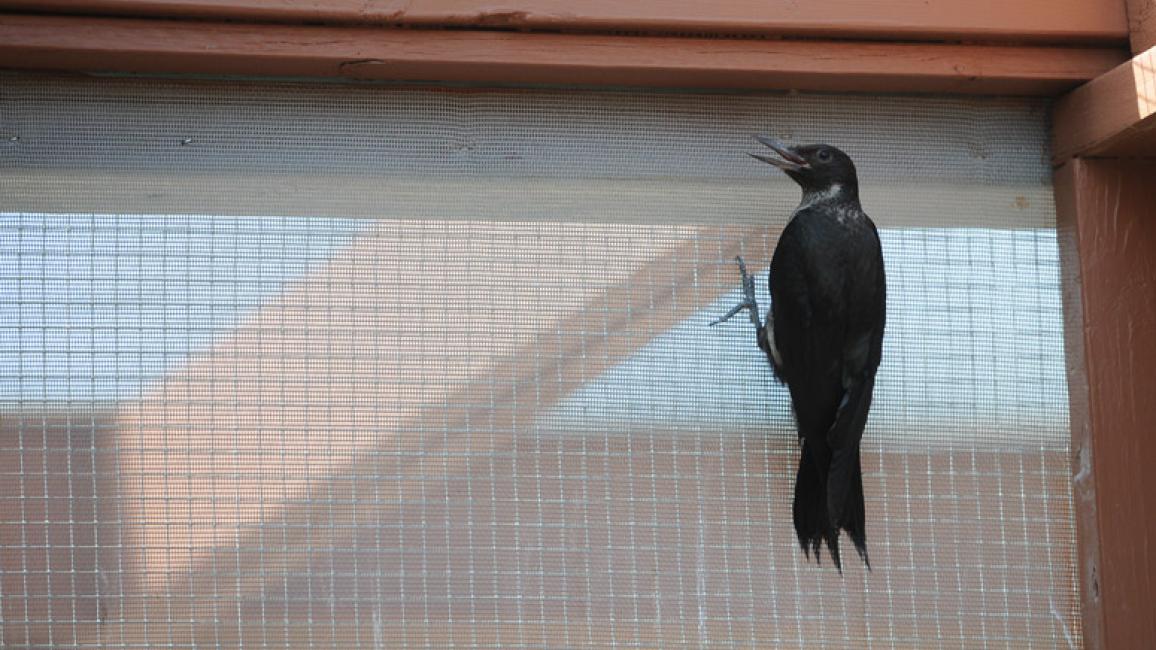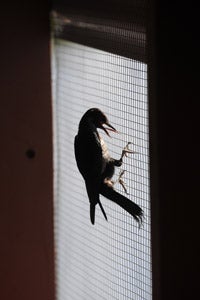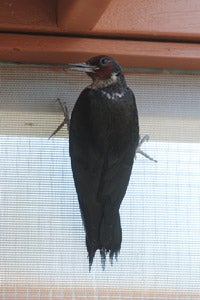Lewis’s woodpecker fledglings in need of help

 Lewis’s woodpecker fledglings had been left on the doorstep of the Utah Division of Wildlife Resources office near Beaver, Utah, inside the dead stump of a tree, along with a note. In the note, the kind people who rescued them said they were sorry for dropping off the young birds, but that they didn't know what else to do. They had tried contacting state authorities, but for some reason, no one had responded. They had spotted the birds in the stump of a newly cut-down tree and had been feeding them grasshoppers and other insects. They wrote, "We do not have the knowledge to rehab them to the wild. They are great birds!"
Lewis’s woodpecker fledglings had been left on the doorstep of the Utah Division of Wildlife Resources office near Beaver, Utah, inside the dead stump of a tree, along with a note. In the note, the kind people who rescued them said they were sorry for dropping off the young birds, but that they didn't know what else to do. They had tried contacting state authorities, but for some reason, no one had responded. They had spotted the birds in the stump of a newly cut-down tree and had been feeding them grasshoppers and other insects. They wrote, "We do not have the knowledge to rehab them to the wild. They are great birds!"
The Utah Division of Wildlife Resources immediately contacted Carmen Smith, manager of Wild Friends at Best Friends Animal Sanctuary and licensed wildlife rehabilitator, and arranged transport for the birds. The birds arrived in good shape after their adventures. Still too young to fly, they had healthy appetites and were doing well.
Lewis's woodpeckers need very calm, quiet surroundings. They're used to being high up in the treetops, and the hustle and bustle of life nearer the ground can be alarming for them.
Hungry Lewis’s woodpecker baby birds
The fledglings were hand-fed every two hours, and were given additional liquid food, too. Carmen feeds every wild bird in rehabilitation exactly the right diet for that species.
In this case, the woodpeckers' rescuers had done a great job, but as a general rule, if you rescue a wild bird, don't feed him. Instead, contact a licensed wildlife rehabilitator and take the bird there right away, so he can be fed the correct diet, as well as receive the right care for any injuries he may have.
For the first week, these three lived in a 38-gallon reptarium, which has soft sides to protect delicate feathers. They climbed along a vertical perch, which is just the kind of perch a woodpecker expects to have.
 Rehabilitating different species of birds
Rehabilitating different species of birds
The rehabilitators at Wild Friends rehab around 100 different species of native wild birds, and each species has its own unique requirements, so it takes a lot of specialized knowledge to know all about housing, perches, diets and other needs a bird may have.
Soon, the three woodpeckers moved into a larger cage, with the tree stump they came in nestled inside it. There, they perfected their skills at self-feeding.
When they no longer needed weighing to monitor their weight and no longer needed any help with feeding, they moved to a flight aviary, 16 feet by 8 feet, which is a good size for woodpeckers.
They're happy and eagerly awaiting the moment when they can go back to the forests that are familiar to them to begin their lives back in the wild.
Releasing birds back to the wild
In a few days, they'll be driven north up into the mountains, to the tall trees that they love, either near Beaver, where they came from, or closer to one of the nearby national parks, which has a great habitat for Lewis's woodpeckers.
They'd like to say thank you to the kind people who found them, who cared about them, and who headed them in the right direction to receive the care they needed for a good start in life.
Find out more about wildlife rehabilitation at Best Friends Animal Sanctuary.
If you find a bird or wild animal who seems to need help, first call a licensed wildlife rehabilitator for advice on what to do. To reach a wildlife rehabilitator in your area, call Wild Friends at 435-644-2001, ext. 4460.
Photos by Molly Wald